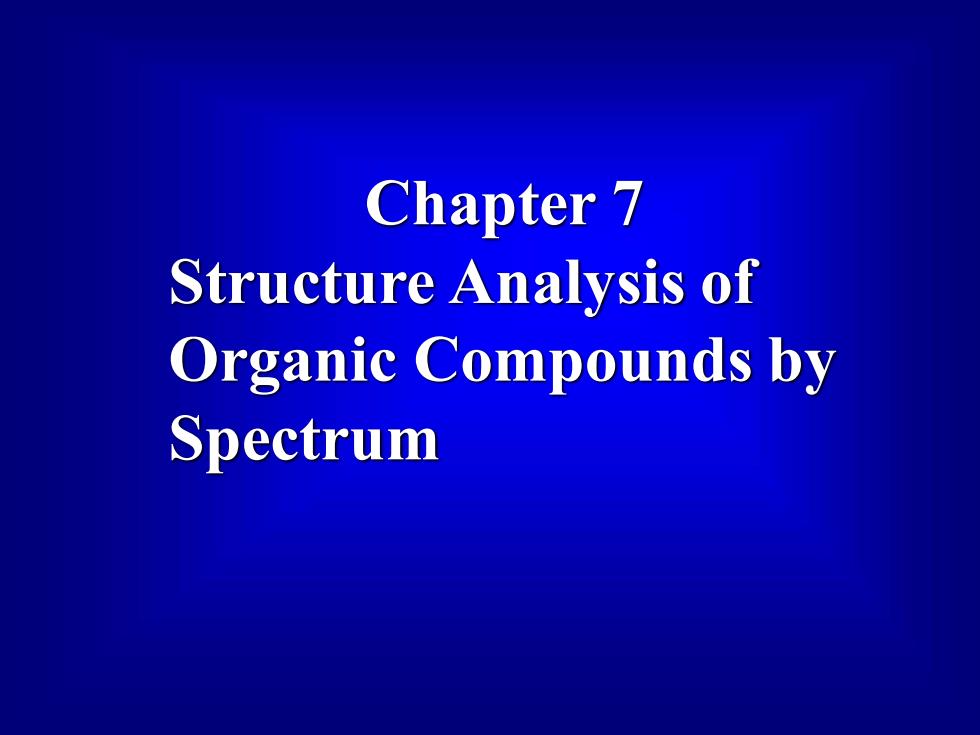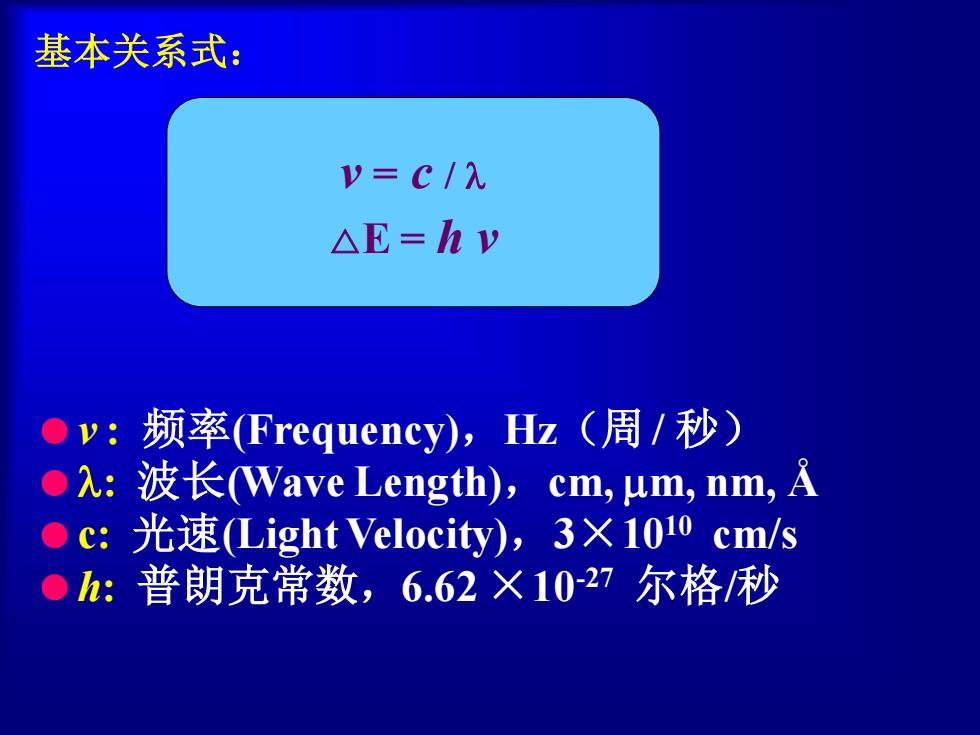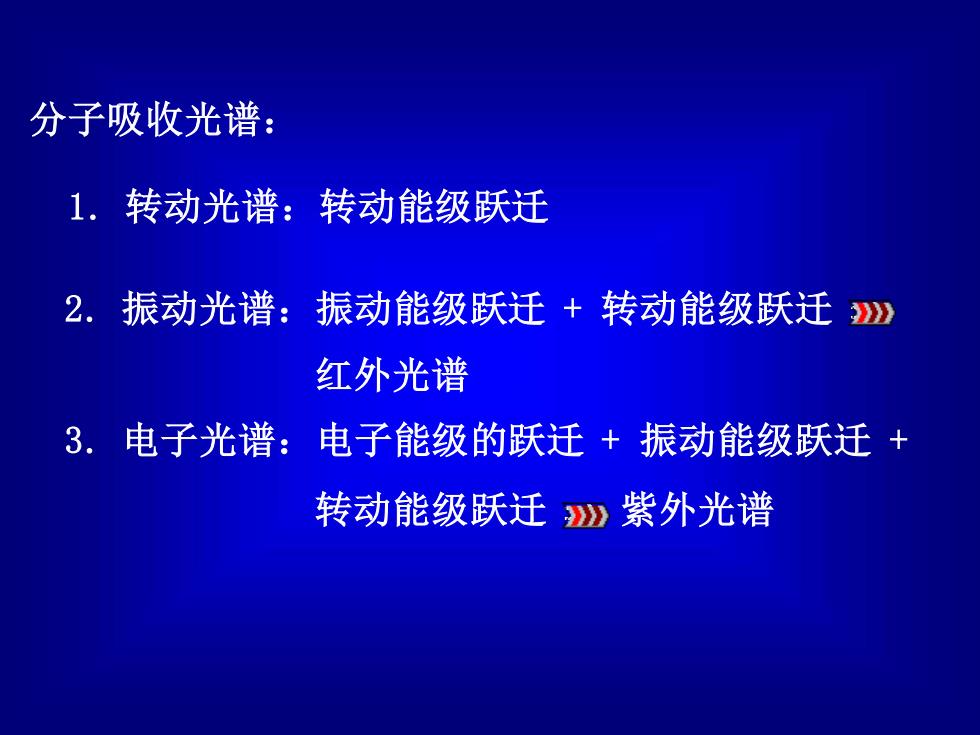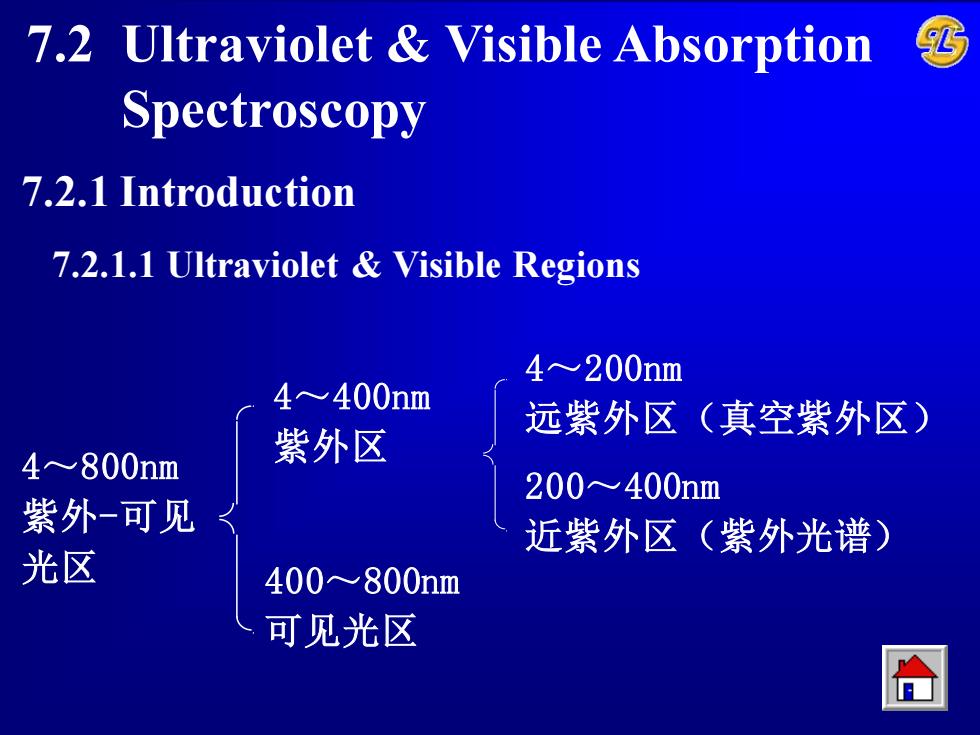
Chapter 7StructureAnalysis ofOrganic Compounds bySpectrum
Chapter 7 Structure Analysis of Organic Compounds by Spectrum

7.1 General Concepts aboutElectromagnetic Spectrum10710410210-310-41010101010s能量,卡/摩10-1210-1010510-1410-10310-10-107波长,米无线电L市射纹波射紫环线线外战1031013204510:102210-101101103104频率,HzFig 7-l. Regions of Electromagnetic Spectrum
7.1 General Concepts about Electromagnetic Spectrum Fig 7-1. Regions of Electromagnetic Spectrum

基本关系式:V=C/2AE=hV频率(Frequency),Hz(周/秒)波长(Wave Length), cm, μm, nm, A光速(Light Velocity),3×1010 cm/s普朗克常数,6.62×10-27尔格/秒h:
基本关系式: v : 频率(Frequency),Hz(周/ 秒) : 波长(Wave Length),cm, m, nm, Å c: 光速(Light Velocity),3×1010 cm/s h: 普朗克常数,6.62 ×10-27 尔格/秒 v = c / E = h v

分子吸收光谱:1.转动光谱:转动能级跃迁2.振动光谱:振动能级跃迁+转动能级跃迁红外光谱3.电子光谱:日电子能级的跃迁+ 振动能级跃迁 +转动能级跃迁王》紫外光谱
分子吸收光谱: 1. 转动光谱:转动能级跃迁 3. 电子光谱:电子能级的跃迁 + 振动能级跃迁 + 转动能级跃迁 紫外光谱 2. 振动光谱:振动能级跃迁 + 转动能级跃迁 红外光谱

7.2 Ultraviolet&VisibleAbsorptionSpectroscopy7.2.1 Introduction7.2.1.1 Ultraviolet & Visible Regions4~200nm4~400nm远紫外区(真空紫外区)紫外区4~800nm200~400nm紫外-可见近紫外区(紫外光谱)光区400~800nm可见光区
7.2 Ultraviolet & Visible Absorption Spectroscopy 7.2.1 Introduction 7.2.1.1 Ultraviolet & Visible Regions 4~800nm 紫外-可见 光区 4~400nm 紫外区 4~200nm 远紫外区(真空紫外区) 200~400nm 近紫外区(紫外光谱) 400~800nm 可见光区